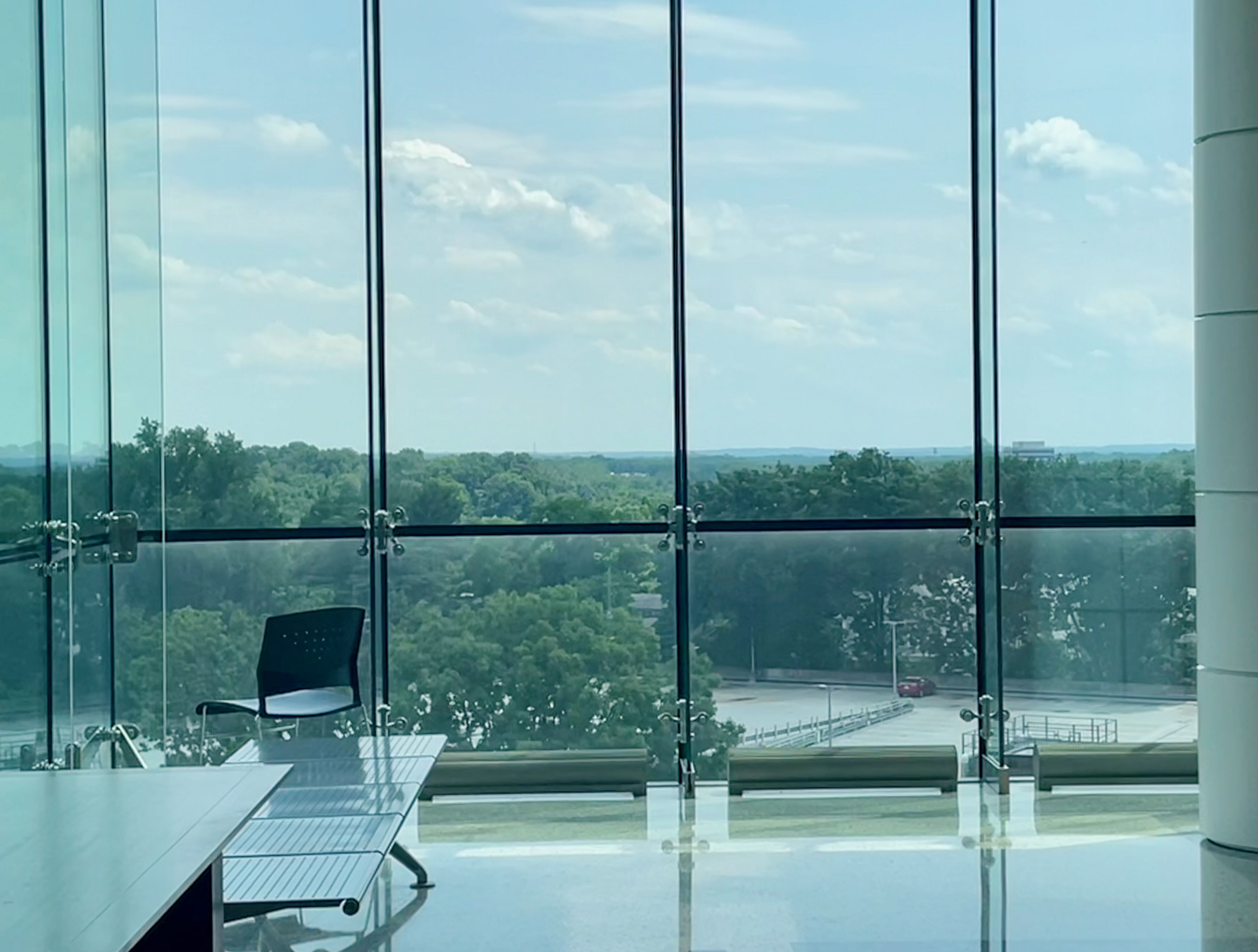Judicial Road Trip!
After meeting with the Mid-Atlantic Innocence Project yesterday afternoon, we met with Assistant Federal Public Defender Mary Petras. This meeting felt more conversational, perhaps because Judge Canan, one of our Study Tour Judges, used to be a court-appointed defense attorney. It was really interesting to listen to Judge Canan and Ms. Petras compare their experiences. Ms. Petras told us that she worked independent from the court, which she was extremely grateful for. Conversely, Judge Canan noted that when he was working as a court-appointed defense lawyer, he had to ask for permission whenever he wanted to, say, hire an expert witness. This was fascinating to me, since I had assumed that defense attorneys were always independent from the court.
Both Judge Canan and Ms. Petras praised DC for providing a relatively high amount of resources for their public defenders, which was surprising but nice to hear. However, both noted that this is an anomaly; most public defenders are severely overworked and in need of greater resources. They urged the Kazakhstani judges to consider following the DC model—that is, endowing public defenders with significant support and resources—should they go forward with moving to an adversarial justice system. Judge Canan explained that an adversarial justice system has, in his view, essentially two components: (1) two equally resourced sides fighting it out in the hope that this process will reveal the truth; and (2) a number of protections—e.g. spousal privilege, patient-physician privilege—that ensure the parties' civil rights are protected. Judge Canan praised adversarial systems, emphasizing that they often do a "wonderful" job at protecting civil rights and preventing governments from influencing cases. However, both sides are often not equally well-resourced. In particular, Judge Canan bemoaned the fact that we do not provide court-appointed attorneys in civil cases. He noted that he has often seen custody cases, for example, in which one parent has a high-powered attorney and the other has no representation whatsoever. "How," Judge Canan asked, "can an adverserial system, in which the judge acts only as a referee, be fair in that instance? Both inquisitorial and adverserial systems have their strengths and weaknesses, depending on the situation."
Interestingly, as our trip continued, my understanding of the boundaries between inquisitorial and adversarial systems blurred. The day after our conversation with Ms. Petras, we took a road trip to Maryland, where we attended two hearings at the Montgomery County Circuit Court. At one point Judge Mize was explaining jury trials to our visitors, when one of them explained that Kazakhstan actually does have jury trials in criminal cases sometimes. This greatly surprised the American judges, who had assumed juries were not used in inquisitorial systems. Moreover, Judge Canan and Judge Mize noted that they did actually act as inquisitorial judges sometimes, such as when one of the parties involved is a particularly vulnerable individual, such as a young child.
The differences and similarities between the two systems was probably my favorite topic to discuss. Due to the focus of the tour, conversations mostly centered around adversarial and inquisitorial systems, but on the way back from Maryland I was able to discuss the differences between the common law and continental legal systems with one of our visitors. He explained that Kazakhstan follows the continental legal system, which he noted stems largely from the German legal system. Judges operating under the continental system rely on their own interpretations of the law alone rather than on case law. From our visitors' perspective, it was quite odd that our judges were bound by the decisions of higher courts. Comparing and contrasting our two justices systems helped me see my own justice system through fresh eyes.
On a lighter note, all of us were so impressed with how beautiful the Montgomery County Circuit Court was. I wasn't able to take many pictures—it felt rude with so many judges around—but I did take one of the beautiful view from the courthouse's fourth floor:
